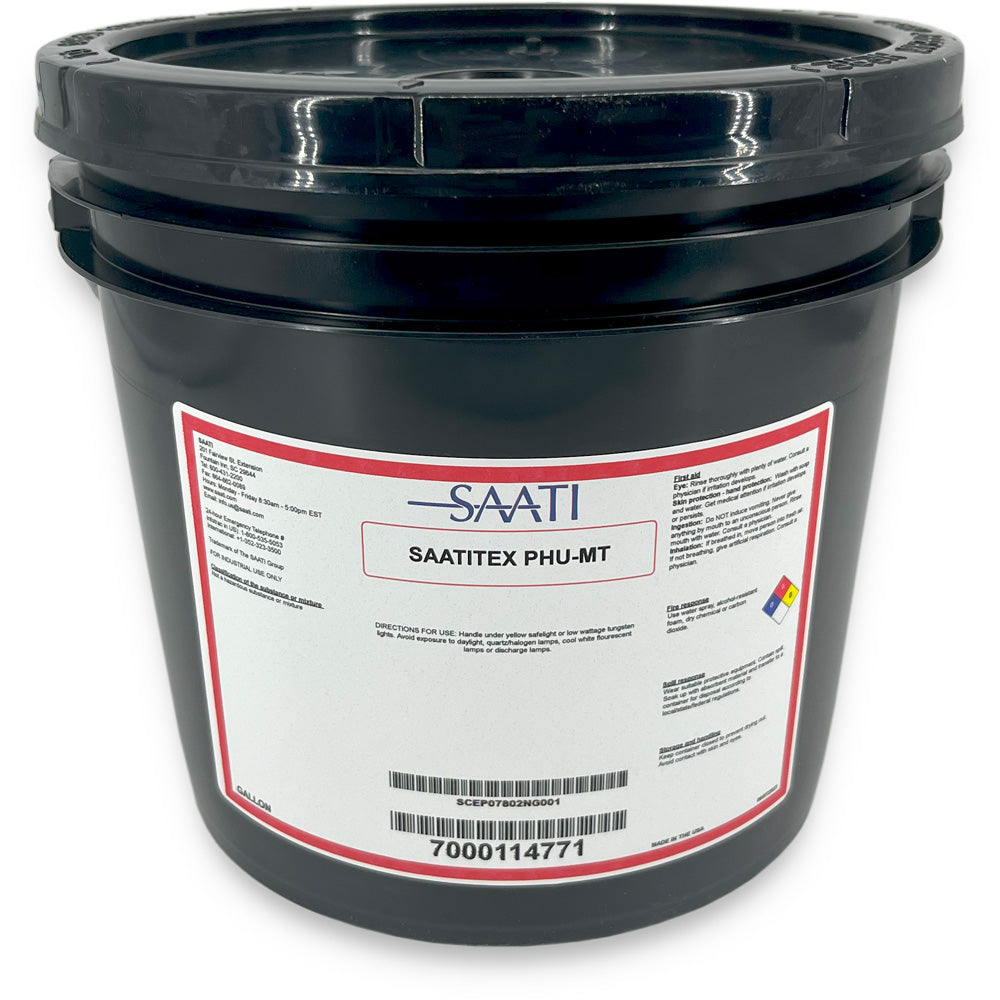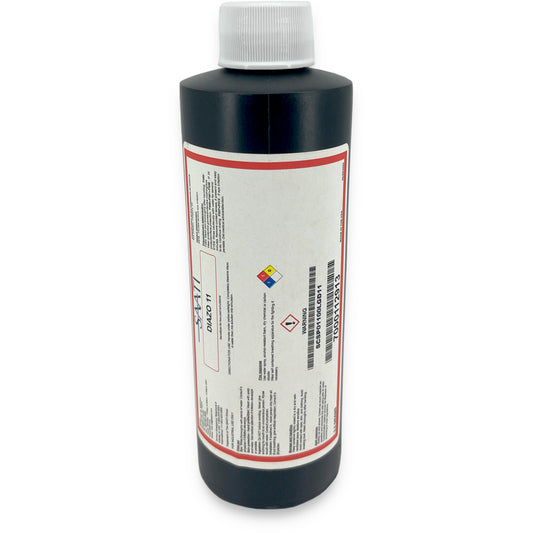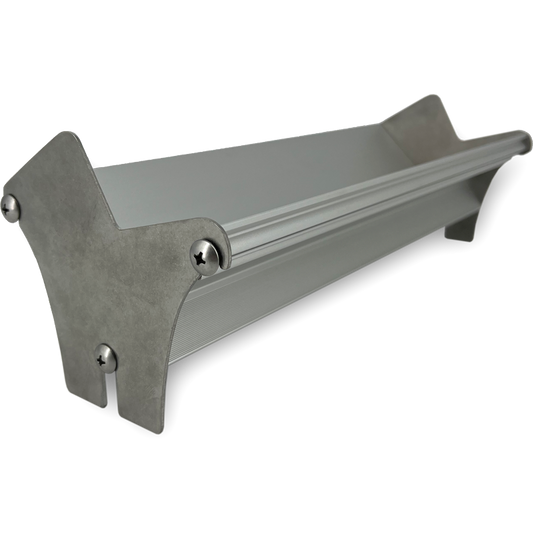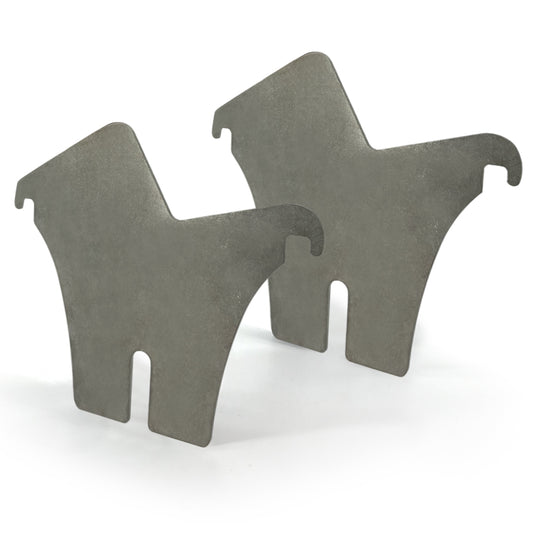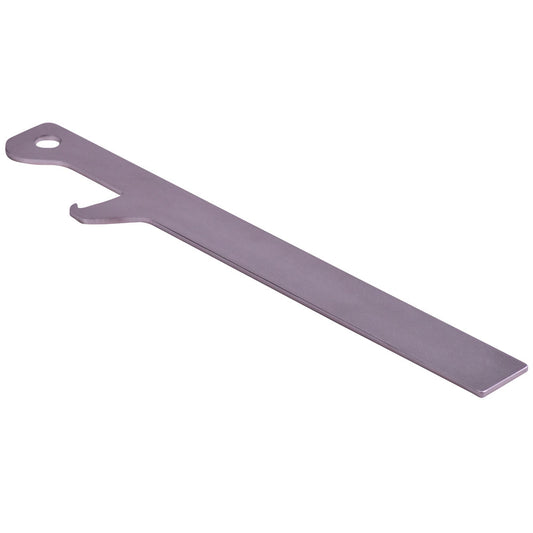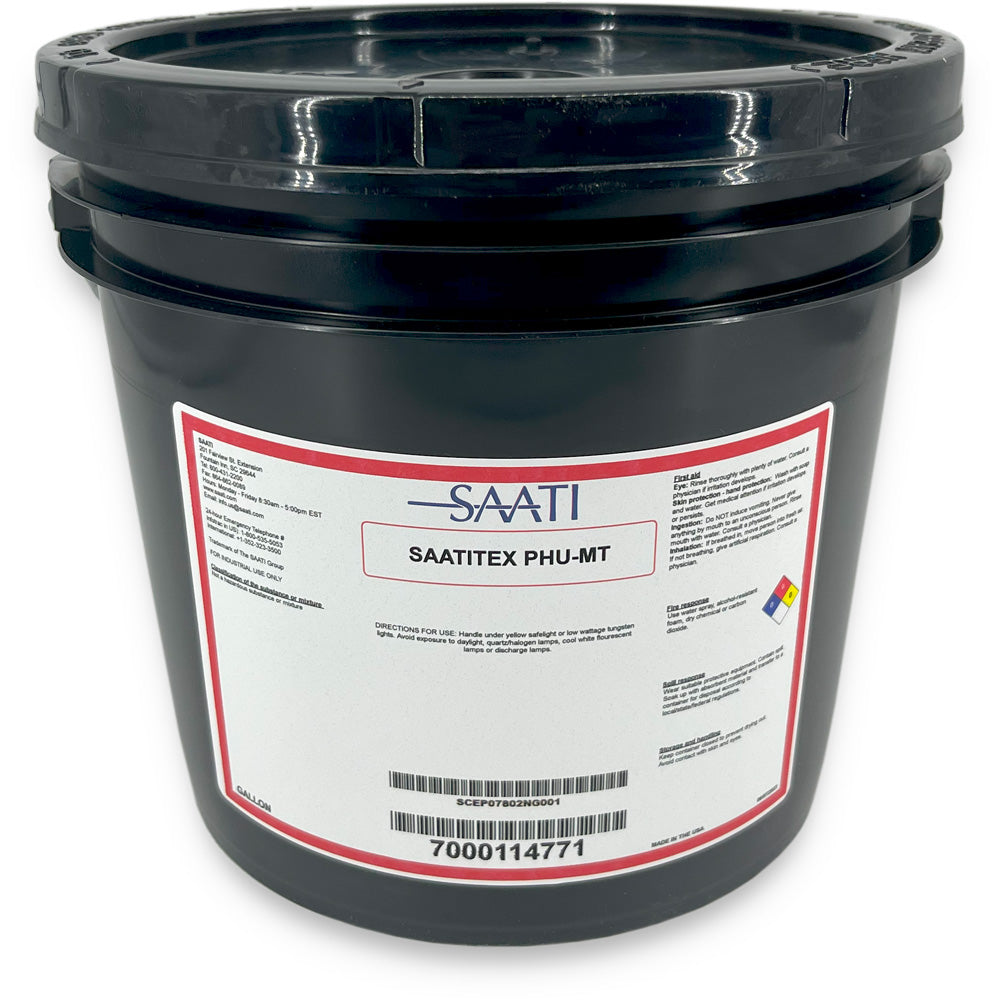
Often Purchased With
-
DIAZO 11 (Emulsion Sensitizer)
SCDIAZO-11Regular price $32.00 CADRegular priceUnit price per -
Monster-Max II Emulsion Scoop Coater
MMSC4 + MMENDCAPRegular price From $36.00 CADRegular priceUnit price per -
End Caps for Monster-Max II Emulsion Scoop Coater
MMENDCAPRegular price $24.00 CADRegular priceUnit price per -
Emulsion Buddy
EMULSIONBUDDYRegular price $24.00 CADRegular priceUnit price per
Additional Information
Handle under yellow safelight or low wattage tungsten lights. Avoid exposure to daylight, quartz/halogen lamps, cool white fluorescent lamps or discharge lamps.
-
Sensitizing & Mixing
Emulsion is presensitized during production and does not require mixing.
-
Mesh Preparation & Degreasing
Degrease and abrade new mesh with SAATI Direct Prep 1 in order to optimize stencil adhesion; dry and store the screen in a dust free, dry environment prior to coating. For more applications, thoroughly degrease the mesh prior to use with SAATI Direct Prep 2.
-
Coating
By hand: Using a high quality scoop coater or coating trough, apply one or two coats to the substrate side of the screen, followed by one or two coats on the squeegee side. For a thicker stencil, apply additional coats to the squeegee side prior to drying. For a higher quality stencil with a minimal increase in stencil thickness, apply one or two additional coats to the substrate side of the screen after the initial coats have dried.
With Automatic Coating Machines: For general purpose printing use 1+2 coating program, with one coat on substrate side and two coats on squeegee side of screen. For thicker stencils apply additional coats on squeegee side by changing machine program to 1+3, 1+4, etc. For a high quality stencil with controlled edge definition, but without excessive emulsion build up (EOM), use 1+1 and then dry screen before applying additional ‘wet on dry coats’ with 1+1 or 2+2 program, until desired Rz value is attained.
-
Drying & Storage
Thoroughly dry the coated screen at a maximum temperature of 104°F (40°C) in a dust free, dark or yellow light area, with the substrate side facing down to optimize stencil quality. Coated screens should be stored in a dust free, dry, safelight environment.
-
Exposing
With film positive - Ensure that all surfaces, emulsion, film and glass are free of dust to minimize pinholes. Contact the emulsion side of the positive with the substrate side of the screen and secure in position before placing the screen in a suitable vacuum frame. Many variables, such as lamp type and age, distance from lamp to screen, mesh type and coating thickness, can affect exposure time. To confirm correct exposure, adhere a SAATI 21-Step Sensitivity Guide to the perimeter of the emulsion outside of the art, but in an area that will be completely exposed. Develop the image with a strong & finely divided water spray applied equally to all areas of the emulsion, including the sensitivity guide. A correct exposure level is indicated by holding 7 solid steps on the sensitivity guide once developing is concluded.
With direct to screen ink or wax mask, or CTS exposure – Ensure that the emulsion surface is free of dust to minimize pinholes. To confirm correct exposure, adhere a SAATI 21-Step Sensitivity Guide to the perimeter of the emulsion, outside of the art but in an area of the emulsion that will be completely exposed. Develop the image with a strong & finely divided water spray applied equally to all areas of the emulsion, including the sensitivity guide. A correct exposure level is indicated by holding 6 solid steps on the sensitivity guide once developing is concluded.
-
Post Exposing
Post expose with daylight or an exposure lamp to produce a more water and/or solvent resistant stencil. This is particularly effective process to improve water resistance of SBQ based emulsions for use with water-based or discharge inks for textile printing applications. SAATI Pro-Lite 300 or 450 LED exposure lamps are recommended for fast and consistent results with any combination of mesh & emulsion.
-
Reclaiming
Manual process - Remove all ink residues immediately after printing with SAATI Remove IR26. Remove stencil with SAATI Remove ER6 (concentrate) diluted in dip tank, or for spray & brush use Remove ER2 (diluted), or Remove ER5. For stains use a second application of SAATI Remove IR26, and for stubborn ghost images, use SAATI Remove HR9 followed by a pressure washer.
Automatic machine process - Remove all ink residues immediately after printing with SAATI Remove IR29. Remove stencil with SAATI Remove ER10, ER13, or ER25 (concentrates). For stains use a second application of Remove IR29, and for stubborn ghost images, use SAATI Remove HR9 followed by a pressure washer.
-
Poor Coating Quality
• Properly clean, degrease and rinse the screen to remove all residues and traces of chemicals
• Properly and evenly tension the fabric
• Clean and ensure the scoop coater does not present any defect edge
-
Poor Detail or Difficulty Washing Out Image
• Ensure emulsion and coated screens are handled in safelight conditions only
• Ensure a minimum vacuum of 0.66 bar (500 mmHg or 20 in Hg) on vacuum gauge for optimum contact of the positive
• Optimize exposure time and use only high quality film positives
• Do not store sensitized emulsion or coated screen at high temperatures
-
Emulsion Falls Off, Extreme Pinholes or Severe Stencil Breakdown During Printing
• Ensure that damp screens are not being exposed
• Only expose screens with an even and consistent coating thickness
• Ensure that stencil has not been severely underexposed
• Ensure mixed emulsion is not too old, has been correctly sensitized and has not been stored at high temperature
-
Difficulty Reclaiming Screens
• Not reclaimable once catalyzed
• Optimize exposure time and properly rinse the squeegee side of the screen during developing to remove all residual traces, especially when using higher mesh count dyed fabric
When sealed in the original container and stored in cool conditions, SAATI products will maintain their original properties for one year from the date of production.

